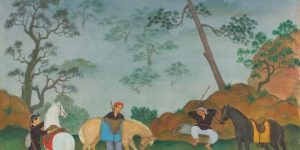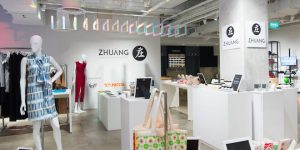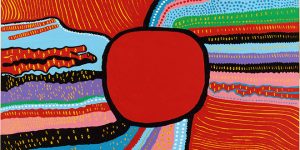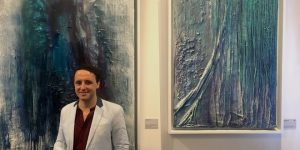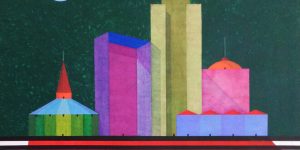Art in Singapore: Then and Now
As a nation-state that has grown accustomed to punching above our weight class in terms of our economic development, it is perhaps time to look at how sure-footed we have become in terms of our art scene.
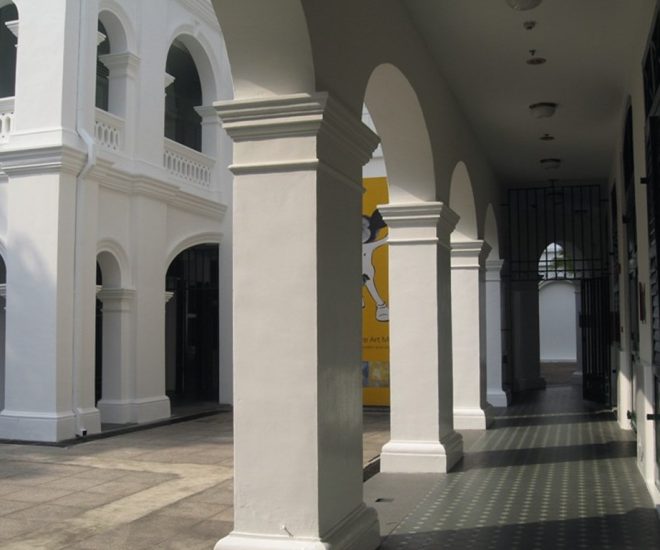
For a nation-state that only recently celebrated its 48th year of independence, it might seem premature to attempt a determination of just how far we have come in terms of the development of our art scene. This is especially so given that openness and ease of travel abroad allows an appreciation for the art heritage of the finest culture capitals of the world. These art capitals, possessing certain longevity in their art history, would seem to have set the standard a yawning distance ahead.
However, as a nation-state that has grown accustomed to punching above our weight class in terms of our economic development, it is perhaps time to look at how sure-footed we have become in terms of our art scene.
The uniqueness of Singapore lies in the concerted government involvement that spearheads many of our country’s successful initiatives. Likewise, the art scene in Singapore has been invigorated through purposeful government intervention.
The impetus for the development of the art scene occurred a little over two decades ago. Led by former President and then-Deputy Prime Minister, Mr Ong Teng Cheong, the 1989 Report of the Advisory Council on Culture and the Arts (ACCA) prescribed the setting up of key art institutions and art infrastructure. Prior to this report, the arts and culture climate of Singapore could be described as nascent, even so far as being labelled a ‘barren wasteland’.
In 2000, the vision for ‘Renaissance Singapore’ was unveiled in the Renaissance City Plan (RCP). This plan highlighted the need for more focus to be given to the ‘software’ aspect of culture and the arts (taking into account that ‘hardware’ infrastructure had been put into place since the publication of the ACCA report). The RCP has undergone three phases, with the most recent RCP III placing the spotlight on homegrown content, and on the need to showcase such content internationally. More recently, the Report of the Arts and Culture Strategic Review affirms the major strides that have been made on the art scene as a result of the ACCA and RCPs, and reiterates the importance of the arts and culture in the forging of a national identity.
The efforts of the Singapore government in executing the RCPs and in the creation of a thriving art landscape, have arguably, been formidable. Within two decades, notable institutions such as the National Arts Council (NAC) and the Singapore Art Museum have been established (in the years 1991 and 1996 respectively). Amongst other objectives, the NAC provides direct funding to emerging and established arts organisations, as well as various grants to support arts practitioners. The NAC also organises the annual Singapore Arts Festival, a month-long celebration incorporating theatre arts, dance, music, and the visual arts.
The Singapore Art Museum currently houses a leading collection of modern and contemporary Southeast Asian artworks. Fulfilling a key recommendation of the ACCA report, the Esplanade opened as a performing arts centre in 2002.

The Singapore Art Museum
The Singapore Tyler Print Institute (STPI) was also established in 2002. The STPI was set up as an intended collaboration with the renowned American printmaker Kenneth E. Tyler. A result of negotiations conducted by the National Heritage Board and the Singapore Tourism Board, STPI was originally intended to operate as a company under the Ministry of Information, Communication and the Arts. Currently, STPI is an international publisher and dealer of fine art prints and works on paper, and also has a gallery space showcasing contemporary art. Flying the flag abroad, STPI recently participated in Art Basel, the leading international art fair, for the first time (and notably as the first Singapore gallery invited to do so).

Singapore Tyler Print Institute
Alongside the advances made by the Singapore government in the art scene, the founding of independent art initiative groups such as The Artists Village and 5th Passage is worthy of mention. The Artists Village was founded by contemporary artist Tang Da Wu in 1988, and was the first artist colony to exist in Singapore. Artists such as Lee Wen (a participant in the Singapore Biennale this year) and Amanda Heng were the principal artists to be associated with the Artists Village. The artists Suzann Victor, Susie Lingham and Han Ling formed the 5th Passage in 1991. Although the 5th Passage no longer exists as an entity, one of its founding members, Susie Lingham, was recently appointed as director of the Singapore Art Museum. An alternative space for the arts also existed in The Substation (formed in 1990 and predating the NAC), helmed by local playwright Kuo Pao Kun. These pioneering spirits within our local arts community may be said to have sought to create early on, the homegrown artistic identity advocated by the RCPs.

The Artists Village
Currently, culture vultures here would surely appreciate the starburst of art events dotting their calendar now than when compared to two decades ago.
A biennale is a major (non-commercial) exhibition of contemporary art held every two years, and is viewed as a prestigious event as only select artists are invited to attend. The Venice biennale was established in 1895 and set the hallmark for future biennales as a preeminent art exhibition. The upcoming Singapore Biennale (organised by the Singapore Art Museum and in its fourth appearance this year) serves as a platform for local and regional contemporary artists to engage with a global audience.
An art fair is tailored specifically towards the selling of art, and the presence of art fairs arguably injects certain vibrancy into the art market. First held in 2011, Art Stage Singapore creates a networking platform for gallerists, artists, and private collectors. Flaunting the tagline “We are Asia”, Art Stage Singapore aims to provide an international showcase of Asian contemporary art. For a more wallet-friendly option, the Affordable Art Fair (scheduled to be held in November) promises an exhibition of contemporary art with a diverse range of artists and price points.
The proliferation of commercial art galleries in the past twenty years, has possibly contributed to the increased buzz in the local art market. In addition, with the support of the government, Gillman Barracks was launched in 2012. Gillman Barracks is heralded as a hub for contemporary art in Asia. Situated on a 6.4 hectare site, this project features a cluster of international galleries as well as artist studios. Gillman Barracks will also house the Centre for Contemporary Art, a centre that aims to advance education and research in art.

Gillman Barracks – The Contemporary Art Destination in Asia
Looking further ahead, the National Art Gallery is due to open in 2015. Pursuing a dedicated focus on Southeast Asian Art, the National Art Gallery will showcase artists of the region. Occupying 60,000 square feet of gallery space, works by renowned artists such as Wu Guanzhong, Chen Wen Hsi, and Cheong Soo Pieng will be exhibited in Singapore on a larger scale than ever before. It is hoped that this landmark art museum will be the jewel in the crown amongst the art that is on view in the region.
From this birds-eye glance of the changes that have been made on Singapore’s artistic landscape, it is clear that opportunities for accessing art have abounded exponentially in the past two decades. There now exist many points of approach towards an appreciation of art in Singapore- boiling down really, to a matter of the viewer’s choice.




